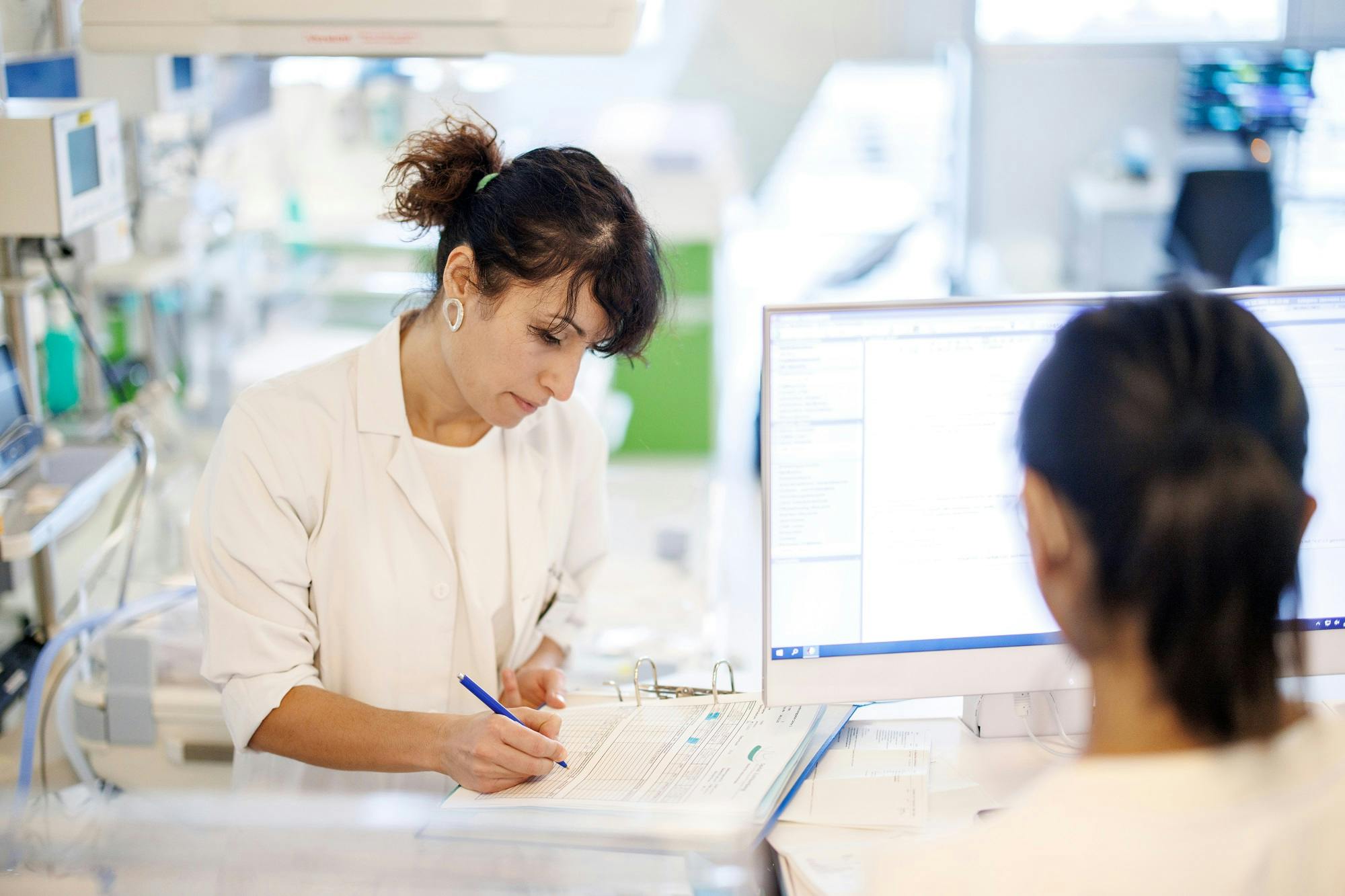Radiology
Computed tomography has established itself as one of the most valuable diagnostic procedures in radiology. Images are produced in seconds so that, for example, your acute injuries can be recognised quickly. The good image resolution enables our specialists to detect even small changes in the organs at an early stage and to visualise them in terms of size and blood flow. The CT scan therefore also allows a very precise indication of the type and extent of a disease without damaging the tissue.
Computed tomography (CT) is a further development of the classic X-ray procedure. With the help of this technology, individual body layers can be visualised without superimposition. High-resolution images of the inside of the body are produced in seconds. While the patient is moved on a table through a narrow ring, several rows of X-ray detectors together with an X-ray tube circle around the person at the same time in today's standard multi-slice CT. This means that several body layers can be created simultaneously with the same X-ray beam per rotation. A large body region can thus be examined in a very short time.
Use of a CT scan
The CT scan can be used for a wide range of questions. It is typically used to assess changes in the skull, neck, lungs, abdomen or skeleton. In addition, modern CT scanners enable high-resolution visualisation of blood vessels such as those of the heart or legs. Thanks to a special technique that uses different X-ray energies, information can also be obtained on parenchymal blood flow or the composition of stones in the body. For example, deposits in gout or discrete pulmonary embolisms (blockage of pulmonary vessels) can be detected in this way.
Our offer in the field of computer tomography (CT)
- Examination of all body regions (head, neck, lungs, abdomen, joints)
- Examination of the blood vessels (angio-CT)
- High-resolution CT examinations, for example of the lungs, paranasal sinuses or teeth (dental CT)
- ECG-triggered examinations of the aorta or cardiac CT (calcium scoring, coronary visualisation)
- Dual-energy CT, for example as part of the investigation of gout
- CT with a low dose (low-dose CT), for example to exclude lung centres or to detect ureteral stones
Computed tomography (CT) information sheet
Are you planning a computer tomography scan? We have compiled all the important information for you in the following document.
Computer tomography (CT) fact sheet
Size
158.7 KiB


